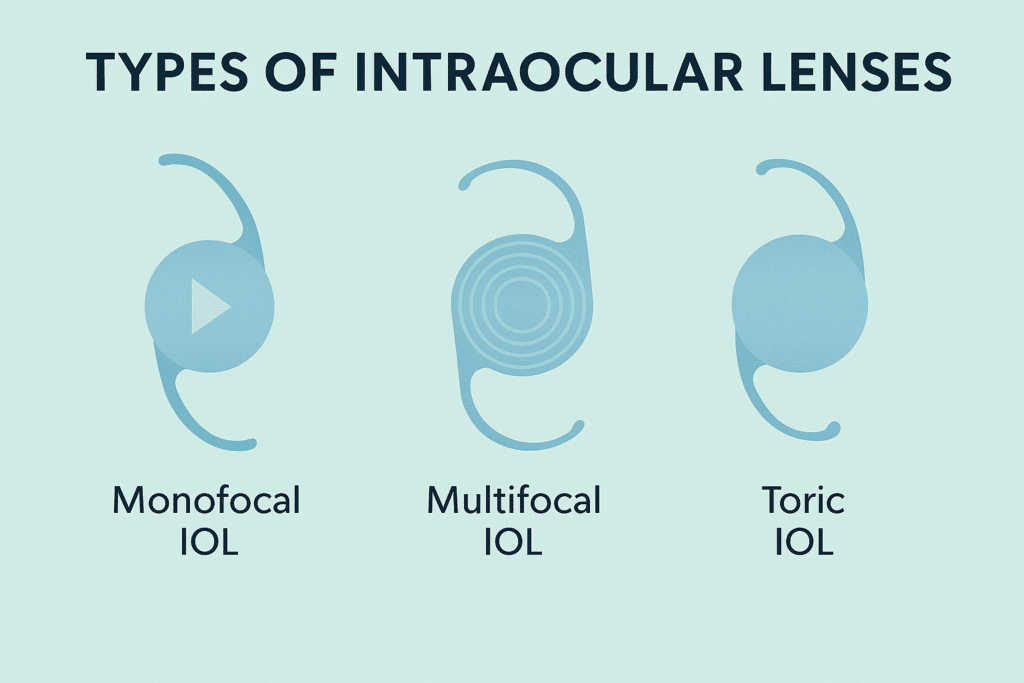Cataract surgery stands as the UK’s most common surgical procedure, with doctors performing over 300,000 surgeries each year. If you’re thinking about femtosecond laser cataract surgery in London, you’ll find it’s one of the most advanced options to restore your vision.
Femtosecond laser-assisted cataract surgery (FLACS) adds laser precision to traditional cataract removal. The procedure uses ultra-fast pulses of light that last just one quadrillionth of a second. This remarkable bladeless technique creates precise incisions and breaks up cataracts more accurately than conventional manual methods.
Specialist clinics like Precision Vision London offer this advanced cataract technology as a premium option, though it’s not accessible through the NHS in the UK. The cost ranges from £3,500 to £4,900 per eye, based on your specific needs and the type of intraocular lens (IOL) you choose.
The surgery takes just 15-20 minutes per eye, though you should plan to spend a few hours at the clinic on your surgery day. Expert surgeons, state-of-the-art equipment, and personalised care throughout your treatment will help you approach this vision-restoring procedure confidently. This detailed guide will show you everything you need to know about preparing for femtosecond laser cataract surgery, from your original consultation to post-operative care.

Understanding Femtosecond Laser Cataract Surgery
Femtosecond laser technology has revolutionised cataract surgery by delivering precision that manual techniques could never achieve. This breakthrough started in LASIK eye surgery and has now transformed how doctors perform cataract procedures throughout the UK.
What makes it different from traditional cataract surgery
The main difference between standard cataract surgery and femtosecond laser-assisted cataract surgery (FLACS) lies in how doctors perform the procedure. Traditional surgery requires surgeons to manually complete all steps they create corneal incisions with a blade, make a circular opening in the lens capsule (capsulotomy), and use ultrasound energy to break up the cloudy lens.

FLACS takes a different approach. The system uses a sophisticated laser to handle these vital preparatory steps with exceptional accuracy. The computer-guided system creates perfectly shaped and sized incisions accurate to within 10 micrometres, something human hands simply cannot match. The laser also pre-softens the cataract, which substantially reduces the ultrasound energy needed during removal. This helps minimise inflammation and potential damage to the eye’s surrounding structures.
FLACS also gives more consistent results. The laser creates a perfect circular opening in the lens capsule that helps improve intraocular lens positioning and stability. On top of that, it uses advanced 3D imaging to create detailed maps of the eye before making any incisions.
How bladeless eye surgery works
Bladeless cataract surgery follows a precise process that combines advanced imaging with laser accuracy. The procedure starts with a complete eye mapping using Optical Coherence Tomography (OCT) or similar technology to create a detailed three-dimensional model of your eye. This step lets doctors customise the entire procedure to your eye’s unique anatomy.
After mapping, the femtosecond laser operating at speeds measured in quadrillionths of a second creates corneal incisions with exact specifications for size, shape, and depth. The laser then performs the capsulotomy to create a perfect circular opening in the lens capsule. The laser breaks down the cloudy lens into tiny pieces in just seconds. Your surgeon removes these pieces using minimal ultrasound energy before placing the replacement intraocular lens through self-sealing incisions. These incisions heal without sutures, which speeds up recovery.
Why it’s considered advanced cataract technology in the UK
The UK recognises femtosecond laser cataract surgery as pioneering technology for several good reasons. The laser creates uniform incisions with consistent size and depth, leading to more predictable surgical outcomes. This technology is a great match for advanced intraocular lenses, such as multifocal or toric lenses that correct astigmatism. The laser’s precision helps position these sophisticated lenses perfectly for optimal visual results.
The system can also correct astigmatism during the cataract procedure through precise corneal incisions. Patients get better post-operative vision without extra procedures. The gentler approach using less ultrasound energy can reduce inflammation and speed up recovery for some patients. The advanced imaging also helps surgeons tackle complex cases with greater confidence and precision. While femtosecond laser cataract surgery offers many benefits, it remains a premium service in the UK. The NHS typically doesn’t offer it, but specialist clinics with state-of-the-art equipment do provide this option.
Who Is a Good Candidate for Laser Cataract Surgery
Not everyone who needs cataract treatment qualifies for femtosecond laser cataract surgery. Experienced ophthalmologists need to check several physical and medical factors to determine if you’re a good candidate.
Factors that affect suitability
Your eye’s structure plays a vital role in determining if laser cataract surgery will work for you. Patients with deep-set eyes, narrow eye openings, or prominent facial features might find it hard to fit the laser docking system. The surgery won’t suit patients who can’t lie flat during the procedure.
Some eye conditions can rule out eligibility. The treatment might not help patients who have severe corneal opacity, major corneal swelling, or previous corneal implants. These conditions can block the optical coherence tomography (OCT) imaging that guides the laser. The imaging system needs a clear path to map your eye’s front segment. Your pupil’s ability to dilate matters too. Eyes that didn’t dilate well (less than 6mm diameter) used to pose problems for femtosecond laser surgery. New low-energy pulse systems have solved this issue, making the procedure available to more people.
When femtosecond laser is recommended
Femtosecond laser cataract surgery works great for patients with astigmatism. The laser makes exact corneal cuts that reshape the cornea and remove cataracts at the same time. This two-in-one approach gives better vision results without extra procedures. Premium intraocular lenses (IOLs) work best with femtosecond laser technology. The laser creates perfectly sized and centred capsulotomies that position advanced lens implants just right.
Complex cases often need laser help. The laser breaks up dense cataracts into smaller pieces, which means less ultrasound energy during removal. This gentler method helps patients with corneal endothelial issues like Fuchs’ dystrophy. Whatever your case might be, a detailed consultation at Precision Vision London will show if femtosecond laser cataract surgery suits you. Our specialists check your eye’s anatomy and take precise measurements to create your personal treatment plan.
Types of lenses used in surgery
After removing your cataract, you can choose from several lens options based on your vision needs and lifestyle:
Monofocal lenses give clear vision at one distance either near, middle, or far. NHS procedures usually use these standard lenses, and you’ll likely need reading glasses afterward. Some patients choose “monovision,” where one eye sees far and the other sees near.
Multifocal lenses correct both near and far vision, which might free you from glasses. These advanced lenses work really well with femtosecond laser surgery because the precise capsulotomy positions the lens perfectly.
Toric lenses help patients with moderate to high astigmatism. Made from standard lens material but designed to correct astigmatism, toric IOLs reduce the need for distance glasses. The laser’s precise cuts work perfectly with these special lenses.
Precision Vision London’s specialists will talk through all your lens options during your consultation. They’ll help you pick the best IOL for your eye health, prescription, and lifestyle goals.

What to Expect Before, During and After the Procedure
Preparing for femtosecond laser cataract surgery involves several stages to ensure the best results. Getting ready for Cataract surgery? The expert team at Precision Vision London guides you through every step of preparation, surgery, and after-care to provide a smooth, safe experience.
Pre-operative scans and planning
Your journey begins with a specialist appointment for a detailed eye examination and measurements. Advanced 3D imaging technology creates a precise map of your eye that helps plan your surgery. These scans use optical coherence tomography (OCT) or Scheimpflug imaging to produce high-resolution, three-dimensional views of your anterior eye segment. This detailed mapping helps your surgeon plan the exact placement of incisions, capsulotomy, and lens fragmentation patterns. You might need to stop wearing contact lenses for several days before the procedure. The operation uses local anaesthetic, so most patients can eat and drink normally beforehand.
The day of surgery: step-by-step
The clinic visit takes approximately 2-3 hours, though the procedure itself takes only 15-20 minutes per eye. Your surgeon will dilate your pupil with eye drops and numb your eye with local anaesthetic (drops, injection, or both).
The procedure follows these key stages:
- Docking: Your surgeon positions a contact device over your eye to stabilise it for the laser treatment.
- Laser application: The femtosecond laser creates precise corneal incisions, performs the capsulotomy, and fragments the cataract.
- Lens removal: The surgeon removes the pre-softened cataract fragments using minimal ultrasound energy in the operating theatre.
- IOL implantation: A clear artificial lens replaces your natural lens.
You’ll stay awake but comfortable during the procedure. Light changes or movement might be noticeable, but you shouldn’t feel pain.
Post-surgery care and follow-up appointments
Your eye needs protection with a shield that you’ll wear overnight after surgery. Someone should drive you home since you cannot drive right after the procedure. The first week requires special care. Avoid heavy lifting (over 20 pounds), keep soap and water away from your eye, and don’t rub your eyes. Normal activities can resume within 24-48 hours, with some restrictions.
Prescribed eye drops help prevent infection and reduce inflammation over a 4-week period. Your first follow-up appointment happens within a week after surgery to check healing progress. A new glasses prescription from your optician should wait at least 4 weeks.
Benefits and Risks of Femtosecond Laser Cataract Surgery
Femtosecond laser cataract surgery has emerged as a remarkable advancement with measurable advantages for eligible patients. Let’s examine both the benefits and potential considerations.
Precision and customisation advantages
The femtosecond laser delivers extraordinary accuracy with incisions precise to within 10 micrometres. This technology creates perfectly circular capsulotomies, ensuring optimal intraocular lens positioning and stability. Indeed, pre-chopping the lens reduces stress on the zonules—particularly valuable for traumatic cataract cases where zonules are already weakened.
For patients with astigmatism, the laser can simultaneously create precise corneal incisions that effectively reshape the cornea during the same procedure. The self-sealing wounds help maintain a stable anterior chamber, reducing endophthalmitis risk.
Potential risks and how they are managed
Of course, as with any procedure, certain complications may occur. Studies show these include conjunctival redness (34%), miosis (32%), and capsule tags (20%). More rarely, anterior tears (4%) or endothelial damage (3%) might develop.
Fortunately, most complications occur during the surgeon’s learning curve—specifically within the first 100 cases. With proper surgical technique, these risks become minimal. To maximise safety, Precision Vision London employs experienced surgeons who specialise in femtosecond laser cataract surgery.
Expected visual outcomes
Most importantly, studies reveal excellent visual results. Around 87.3% of patients achieve refractive outcomes within ±0.50D of target, indicating exceptional precision. Many patients report high satisfaction, with 98.18% satisfaction rates in some studies.
Why Choose Precision Vision London
Quality care makes all the difference in selecting a clinic for femtosecond laser cataract surgery. Precision Vision London provides the gold standard treatment for your vision health.
Our expert surgeons and individual-specific care
Extraordinary surgeons create exceptional outcomes. Our specialists at Precision Vision London have performed thousands of successful cataract procedures. Our clinical team guides you through each step of your trip and answers your questions before treatment. We also offer a detailed one-year aftercare programme to support your recovery completely.
Advanced laser systems and imaging
Precision requires advanced technology. Our dedicated theatre proudly features the most advanced laser equipment. The world-class imaging systems create detailed 3D models of your eye to plan treatment. These technological advantages lead to greater accuracy, boosted safety, and superior results for your vision.
Trusted reputation and patient satisfaction
Patient experiences measure our true success. Our outstanding 4.97 out of 5 rating from 167 verified patient reviews reflects our care quality. A patient shared: “My vision has improved beyond belief and now I have 20/20 vision in both eyes”. Book your consultation today and prepare with confidence. Precision Vision London serves as your trusted partner for femtosecond laser cataract surgery in London with surgeon-led care and treatments customised to your visual and lifestyle needs.
Conclusion
Femtosecond laser cataract surgery stands out as one of the most important advances in vision restoration technology in London today. This bladeless procedure delivers exceptional precision through ultra-fast pulses of light. These pulses create perfect incisions and break up cataracts with remarkable accuracy.
This piece shows you many advantages this advanced approach has over traditional methods. The precision is accurate to within 10 micrometres and will give optimal positioning of intraocular lenses. This becomes particularly valuable when you choose premium options like multifocal or toric lenses. Less ultrasound energy during the procedure leads to reduced inflammation and your eyes might recover faster.
Your surgeon will map your eye using sophisticated 3D imaging technology to customise the procedure based on your unique eye anatomy. The procedure takes just 15-20 minutes per eye, yet the results can transform your life. Most patients achieve refractive outcomes within ±0.50D of target.
Precision Vision London has become a leading destination for this advanced procedure. The clinic’s expert surgeons have completed thousands of successful cataract procedures. They use innovative technology and imaging systems that result in greater accuracy and better visual outcomes. Patient satisfaction tells the real story – a remarkable 4.97 out of 5 rating from 167 verified reviews shows the clinic’s trusted reputation.
Your vision deserves the best care available. A detailed one-year aftercare programme supports you throughout your recovery, while surgeon-led care means personalised attention from first consultation through final follow-up.
Expert surgeons at Precision Vision London minimise potential risks through proper technique. Many patients find this advanced option is the best way forward to restore clear vision and enhance their quality of life. You can usually resume normal activities within 24-48 hours after the procedure, with some temporary restrictions.
Restoring your vision with femtosecond laser cataract surgery is an investment in your future visual health. The procedure costs between £3,500 to £4,700 per eye. The precision, customisation, and reduced dependence on glasses make it worthwhile for many Londoners looking for premium vision correction.
FAQs
Q1. How long does recovery take after femtosecond laser cataract surgery? Most patients experience significantly improved vision within 24 hours of the procedure. While you should plan to take 1-3 days off work, many people can resume most normal activities within a week. However, full healing may take several weeks.
Q2. What preparations should I make before cataract surgery? Prepare by bringing a list of your current medications and arranging for someone to escort you home after the procedure. If you’re having general anaesthesia, follow your surgeon’s instructions about when to stop eating and drinking beforehand. Leave valuables at home and bring something to keep you occupied while waiting.
Q3. Are there any special instructions for the night before cataract surgery? The night before surgery, ensure you get a good night’s sleep. Follow any specific pre-operative instructions provided by your surgeon, which may include using prescribed eye drops or avoiding certain medications. Don’t eat or drink after midnight if you’re having general anaesthesia.
Q4. When can I resume exercise after cataract surgery? It’s generally recommended to avoid strenuous activities for at least one week following surgery to minimise the risk of increased eye pressure or injury. Light walking can usually be resumed within 24-48 hours post-surgery, but always follow your surgeon’s specific advice.
Q5. What are the main advantages of femtosecond laser cataract surgery? Femtosecond laser cataract surgery offers exceptional precision, with incisions accurate to within 10 micrometres. It creates perfectly circular capsulotomies for optimal intraocular lens positioning, reduces the need for ultrasound energy during lens removal, and can simultaneously correct astigmatism. This often leads to faster recovery times and excellent visual outcomes for many patients.
Authors & Reviewer
-
 Olivia: Author
Olivia: AuthorHi, I'm Olivia, a passionate writer specialising in eye care, vision health, and the latest advancements in optometry. I strive to craft informative and engaging articles that help readers make informed decisions about their eye health. With a keen eye for detail and a commitment to delivering accurate, research-backed content, I aim to educate and inspire through every piece I write.
-
 Dr. CT Pillai: Reviewer
Dr. CT Pillai: ReviewerDr. CT Pillai is a globally recognised ophthalmologist with over 30 years of experience, specialising in refractive surgery and general ophthalmology. Renowned for performing over 50,000 successful laser procedures.

